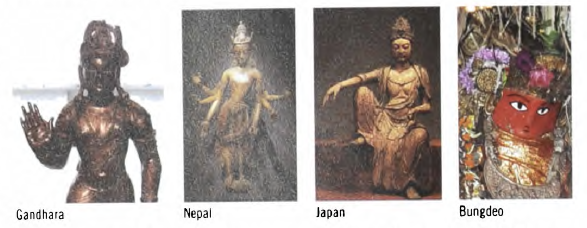From Himal Southasian, Volume 24, Number 4 (APR 2011)
If we regard god not as a supernatural being, but as a representative of the best in human emotions and values, then Asia has been in need of a god for some time – one who showers compassion and empathy all around, and comes to the rescue of those in distress. Southasia, and indeed Asia as a whole, suffers from the pain of natural disasters on a scale beyond any other part of the globe.
The 9.0-magnitude earthquake, followed by a tsunami, multiple aftershocks (each comparable to an earthquake in its own right), the near-meltdown at the Fukushima nuclear plant and the consequent radiation and the economic crisis that hit Japan in early March is also a stark reminder of the panic, the pain of death and the sufferings of those left living in other, earlier calamities. The live video footage of the tragedy as the tsunami surged inland helps us understand the human scale of not only this disaster, but of other disasters where little or no record of the event exists on film, making it difficult to understand the human scale .
The March tragedy in Japan is confirmed to have taken over 9000 lives to date, with 20,000 still missing, and is the latest in a long succession of natural calamities that have blighted Asia since the turn of the century. The 2004 Indonesian earthquake off the coast of Sumatra which triggered the Indian Ocean tsunami took 240,000 lives; the 2005 Kashmir earthquake took 80,000 lives; the Szechuan earthquake of 2008 took 80,000 lives; and the 2008 Nargis cyclone in Burma cost 140,000 lives. All ten of the deadliest natural disasters in human history occurred in Asia, from Turkey to China. The worst three disasters ever occurred in China in deep history, and the fourth-worst was the Bhola tropical cyclone in East Pakistan in 1970, which took half a million lives.
It is clear then why a god of compassion, empathy, rescue and rehabilitation is needed in Asia. I have found this god – while remaining incontrovertibly atheistic in all matters relating to the almighty – in Avalokiteshwara. He is the one ‘who perceives the world’s lamentation’, who ‘assists sentient beings in times of distress’, ‘who shepherds those in trouble to safety’, ‘who hears the cry of distress and works tirelessly to develop’.
If there were a patron deity to oversee the work of those who go in for immediate rescue and those who stay back to provide rehabilitation and reconstruction – not to forget the brave souls who venture into dangerous nuclear sanctums to try and prevent a meltdown – it would have to be Avalokiteshwara, whose name is sometimes translated as ‘he who looks down upon the earth’. As a deity, Avalokiteshwara is a bodhisattva who seeks to ascend to Buddhahood only after the pain of all sentient beings is ameliorated.
The origins of the myth of Avalokiteshwara go back to pre-Buddhist times in the Subcontinent, with some scholars suggesting that the roots of the legend go back to a particular region in Tamil Nadu. In many parts of Southasia, the pre-Hindu, Hindu and pre-Buddhist lores have come to be attached to the bodhisattva. The spread of Avalokiteshwara in iconography started from Gandhara (Afghanistan-Pakistan) around 200 AD. Over the next millennium, Avalokiteshwara became the god of Asia as a whole, his likeness found in paintings and statues in stone, bronze and terracotta from China to Cambodia, Malaysia, Tibet, Vietnam, Mongolia, Nepal and Japan.
But I like best of all my own local Avalokiteshwara, dating from prehistoric animist times, in the village of Bungamati, south of Patan town in Kathmandu Valley. Known as Bungdeo (god of Bungamati), he is also Lokeshwar, Karunamaya, Machhindranath – and Avalokiteshwara. The deity is a clay figure built around a wooden staff, with a flat, painted overface, consecrated every year after repairs to the surface. He is taken around Patan town in a chariot festival which goes back centuries, what UNESCO likes to call ‘intangible heritage’. In one version, popular in folklore, the great sage Machhindranath (guru of the latter-day Gorakhnath) is said to have been brought to Kathmandu from Kamakshya (Assam) to save the Valley from drought. Thus, Machhindranath, aka Avalokiteshwara, ever concerned for the welfare of sentient beings, is also the god of rains and a good harvest of Kathmandu Valley.
Even as I write this, there are bodhisattvas in real life, all over the world, and in Japan. These are the ‘heroic-minded enlightened beings’ who seek to rescue and provide succour to those whose lives – by the tens of thousands – have been devastated by disasters. And the most empathetic and compassionate are those who stay back after the cameras are gone.